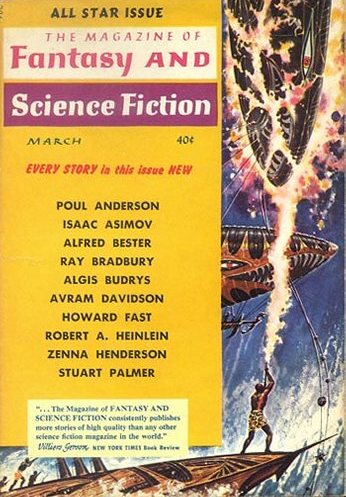
And now, my gentle readers, a free gift.
As you know, I am well-acquainted with Mr. Murray Leinster, science fiction writer extraordinaire. His newest novel, The Pirates of Ersatz has just finished its serial run in this month's Astounding, and the nice fellow has given me permission to distribute it freely amongst my readers.
That's right. This book is yours entirely free of charge!
Now, the question is, should you read it?
I suppose that depends. As I said a couple of months ago, it's set in the same universe as the Med Series, but with a completely different protagonist.
In brief, young Bron Hoddan is an engineer from a family of pirates. Where Hoddan's from, it's almost respectable, even. But Hoddan wants to make his mark in the clean world and so heads to squeaky-clean Walden… where he runs afoul of the law for trying to improve on paradise with an upgraded power generator.
Fleeing for his life to the crude medieval planet Darth, he then runs afoul of the local aristocracy for… well.. just about everything. Yet, so resourceful is Hoddan that he manages not only to survive but to thrive, getting the best of the petty nobles and winning the admiration of the plucky heroine, Lady Fani.

That's only the first half. How Hoddan turns a ragtag fleet of colony ships into a phoney piracy concern and manages to steal from the rich and somehow make everyone richer, is rollicking adventure.
Now, I don't think this is the best Leinster I've ever read. He likes to write short sentences. His sentences have few words. They can be repetitive. He abuses this trait a little overmuch to my liking. The story is also a bit disjointed (dare I say "episodic"?), particularly in the Darth section.
That said, there is also much to like. I happen to really like the decentralized Med Series universe with its range of interesting, unique planets. The story also makes it quite clear that a strong heroine is far more compelling than a trophy, and it is always clear who is in the driver's seat in the Fani/Hoddan courtship.
Most interestingly, in the course of his travels, Hoddan invents an independent landing device small enough for installation on starships. This is huge as, until this book, ships could only land on planets that had erected mammoth landing grids that projected magnetic tractor beams to guide vessels to the ground. I wonder if we'll see the fall-out of this invention in later stories.

So try it. The price is right, and it will definitely get you from point A to Z with a smile on your face. 3.5 stars out of 5.
See you on the 14th!
(Confused? Click here for an explanation as to what's really going on)
This entry was originally posted at Dreamwidth, where it has comments. Please comment here or there.














